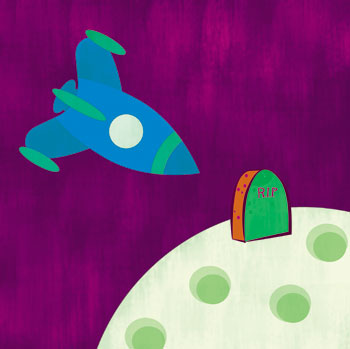What’s Your Death Style?

Do you know about Death Cafés? They’re still pretty new on the scene. If you imagine them as not-quite-underground meetups where you sit around and enjoy refreshments while musing over the morbid, tantalizing subject of human demise, you’ve pretty much got the concept.
Sound like fun? No? Well, Death Cafés are kind of creepy. But lots of people are eager to gather and gab about their secret concerns: “Why do I fear death so?” “What happens to bodies in graves?” In fact, everything about death is inherently intriguing, including that most eternal of questions: What do I want done with my body after I’m gone?
In America, where our ashes can be spread at the 18th hole or converted into precious jewelry or shot into Earth orbit, traditional body-in-steel-casket burial is no longer the go-to choice. We’re a society that prides itself on novelty, including what death care executives (yes, that’s what they call themselves) refer to as “final disposition” of our corpses.
The most trendy among today’s options are “natural burials,” in which you may go green by having yourself lowered into the soil in a hand-painted coffin made of biodegradable woven fabric. Your earthly remains decompose into earthy remains, thus preserving the land for use by the living. Europeans have practiced natural burial for ages. “People in the rest of the world think we Americans are just batty when they see what we do with our caskets,” says Cynthia Beal, founder of Natural Burial Company.
Some of the newer alternatives to burial are a blast–literally. Jeff Staab, who bills himself as “the world’s leading authority on the scattering of ashes,” will gladly set you up with an Ash Scattering Machine ($500 per use) or a Loved One Launcher ($350 to own), both of which can propel a mixture of cremains and, if you wish, confetti for a distance of 75 feet; the airstream can carry the particles for miles beyond, says Staab.
“I’ve even been along on a ski slope for a Dixie cup toast-and-toss,” boasts Staab, who runs a company called Cremation Solutions. “But you don’t want to be downwind for that!” “Uh, is that even legal?” I wonder. “Don’t ask, don’t tell,” Staab replies.
Another popular trend is to have a portion of your cremated remains pressed into a custom-made under-sea reef formation. Also hot is the be-some-bling option. A few ashes are stuffed into kitschy jewelry; be prepared to drop as much as $19,000 to have a lock of hair or some ashes compressed into an actual diamond.
But the most grand way of saying sayonara has got to be the space journey. Charles Chafer, the CEO of Celestis, says his company can get a smidgen of what was once you into a payload container sent to outer space. Cost: as little as $1,000. If you’d like your ashes slammed into the moon’s surface, that’s more like $10,000. It’s pricey, but “going to the moon is a hopeful statement,” Chafer says.
Less ambitious, but more “final” in a sense, is a controversial procedure developed in Scotland just now gaining limited support in the U.S. This novel solution turns bodies into, well, a solution. The technical name is alkaline hydrolysis. Let’s just say this basically amounts to chemically converting corpses into something not unlike a broth that might be poured down a drain at your local Jiffy Lube.
With all the plotting by savvy death care marketers, you’d understand why some might nervously wrestle with the choice about their body’s afterlife. I asked myself who in all the country is possibly best positioned to make a considered decision on such a thing. I figured it might be Mary Roach, author of the national best-seller Stiff: The Curious Lives of Human Cadavers. So, I ask her about her own final disposition. “I’m in a deep state of denial. It’s embarrassing,” Roach tells me. “I like the trend toward green burials. I like the frugality.” Or, she says, “Maybe I’ll have my ashes scattered somewhere. Or I’ll donate my body. Or, uh…”
Indeed, it can be a particularly tough call these days because, more than ever, the style you specify for your exit expresses a powerful final statement about your life.